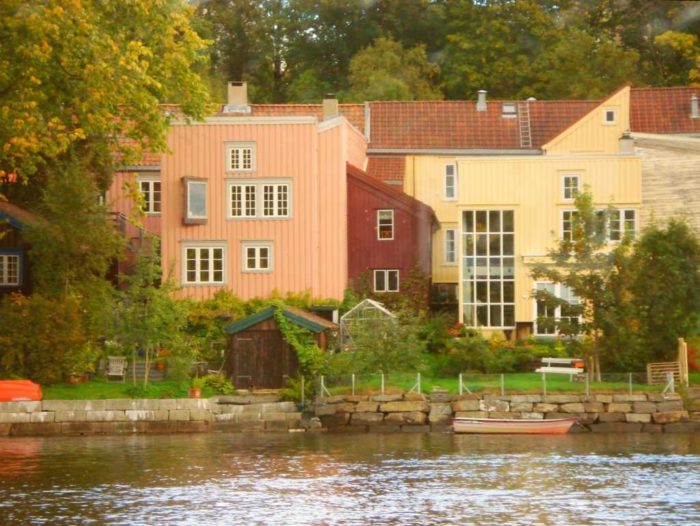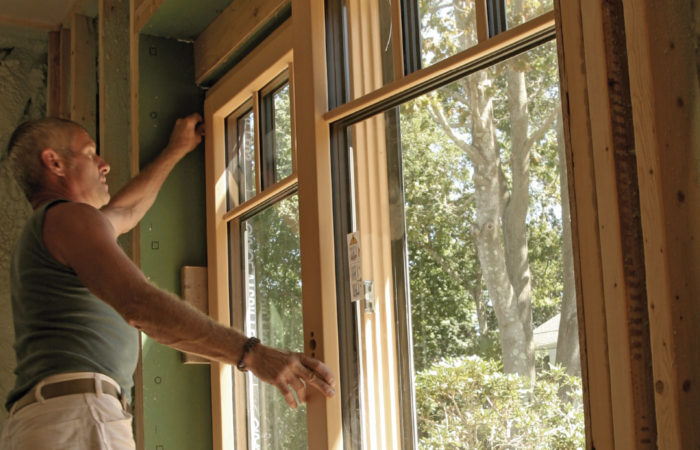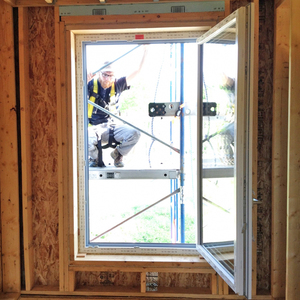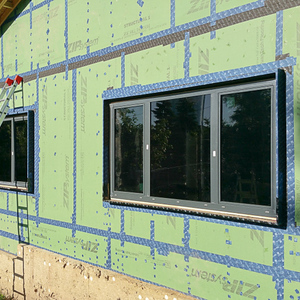
Image Credit: Carilynn Balbo
Window design helps make the most of your site
Double glazed. Triple glazed. Low emissivity. Passive solar. Windows
are talked about a lot in green building. While it is important to compare their technical merits
, more subtle decisions need to be made during the design process. Imaginative window design can help you enjoy your house more and make it greener at the same time.
Expand interior space
Building with an efficient use of interior space is a tenet of green building, but it may leave you feeling claustrophobic. One way to avoid this is to use the outdoors to create the sense that the room you are in is part of a larger space. Windows with low sills bring sight lines closer to the house, increasing visual connection to the outdoors. High windows such as transoms bring in enlightening views of the sky, but extra units cost more. We sometimes have custom muntin patterns made into our windows to create the effect of transoms without breaking the budget.
Ganged windows catch the view
Two or more windows grouped together will capture a panoramic view better than separate units individually placed around a building. Even if the view is only a small yard, ganged windows bring in natural light and make a room feel bigger than it would with separate windows. Smaller windows are friendlier because they are easier to access than huge plate-glass windows, and they are more easily made operable — a necessity for a low-energy, naturally ventilated house. Mulling windows tightly together maximizes views, but stud pockets between windows allow for structural support. More support means smaller headers
and more insulation. Mixing and matching pane sizes might work, but keeping the height-to-width ratio the same (as in the photo at right) ties the disparate elements together.
Put windows on more than one wall
When windows are lined up on a single wall, the effect can be dramatic — but it also creates glare. Photographers use secondary lighting to reduce glare; windows can do the same thing. It feels less cavelike when you can see out more than one wall. If you have a group of low-sill windows on one wall, consider high-sill windows on an adjacent wall, keeping a pattern going such as identical pane sizes or unit widths. High sills counteract glare and the “cave effect” while allowing for furniture placement. Windows on adjacent walls also allow for cross breezes, ventilating
the house naturally.
Corner windows make any room feel bigger
Rooms are defined by their corners (or implied corners) and with a window in the corner, the room is expanded. Corner windows don’t have to be custom bent-glass creations; regular windows pushed as far as they will go into a corner work just fine. Corner windows allow light to wash in along the adjacent wall. The raking light also highlights any flaws so take care during construction.
Keep sills low to pull site close
When privacy isn’t an issue, consider dropping window sills lower than normal. Doing so pulls sight lines closer to the house, increasing visual connection to the outdoors. As long as the edge of the glass is 18 inches above the finished floor and 30 inches away from a door, it shouldn’t need to be tempered, which saves money.
Sometimes it’s worth it to pay extra for windows that sit even lower. This is particularly effective on sloping sites, but even on a flat site, it changes the feel of a space dramatically.
Weekly Newsletter
Get building science and energy efficiency advice, plus special offers, in your inbox.










0 Comments
Log in or create an account to post a comment.
Sign up Log in